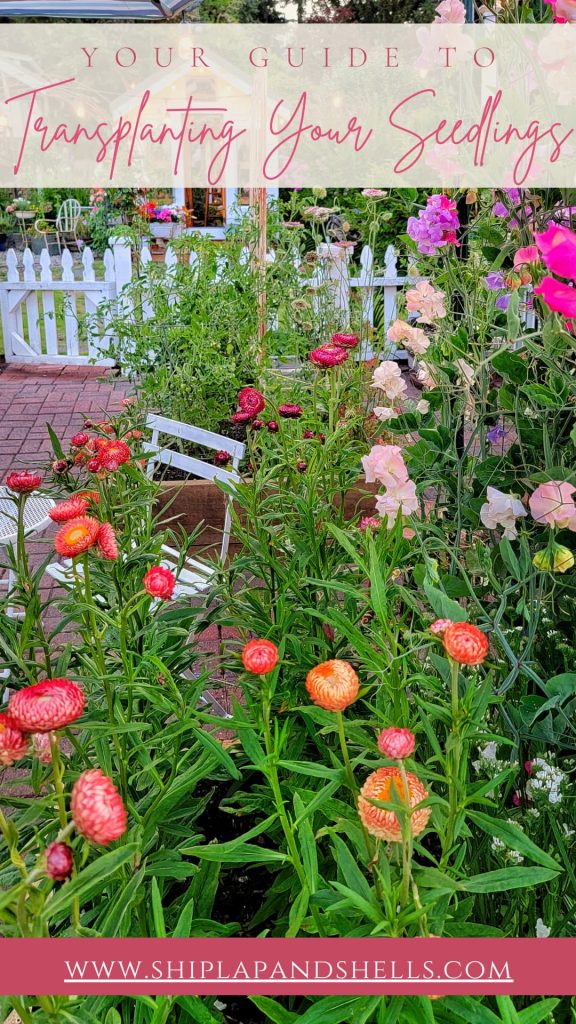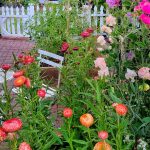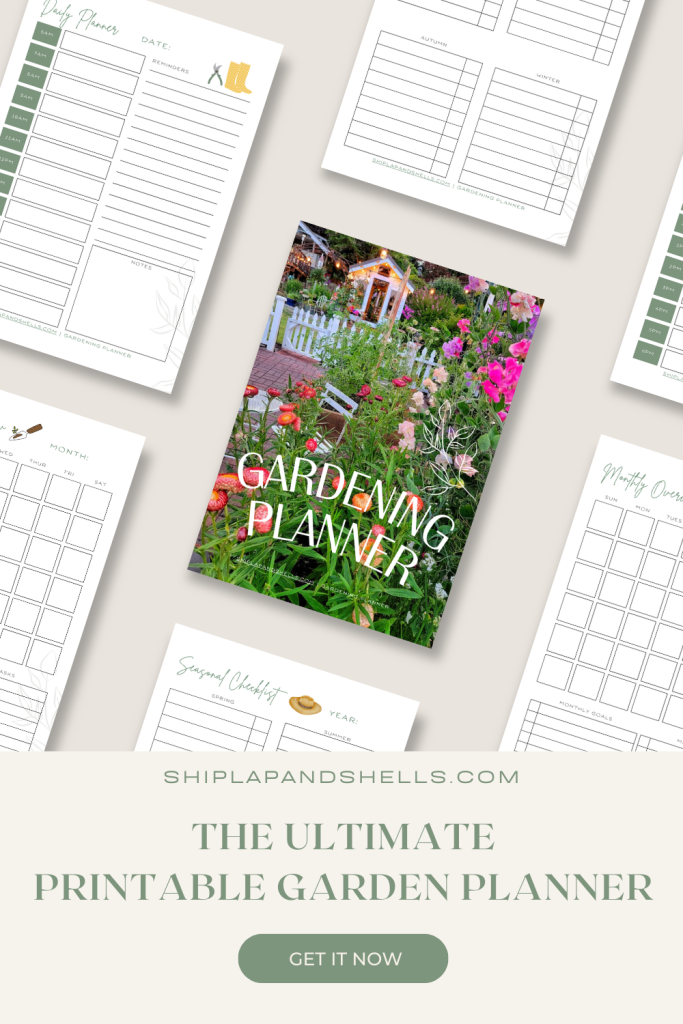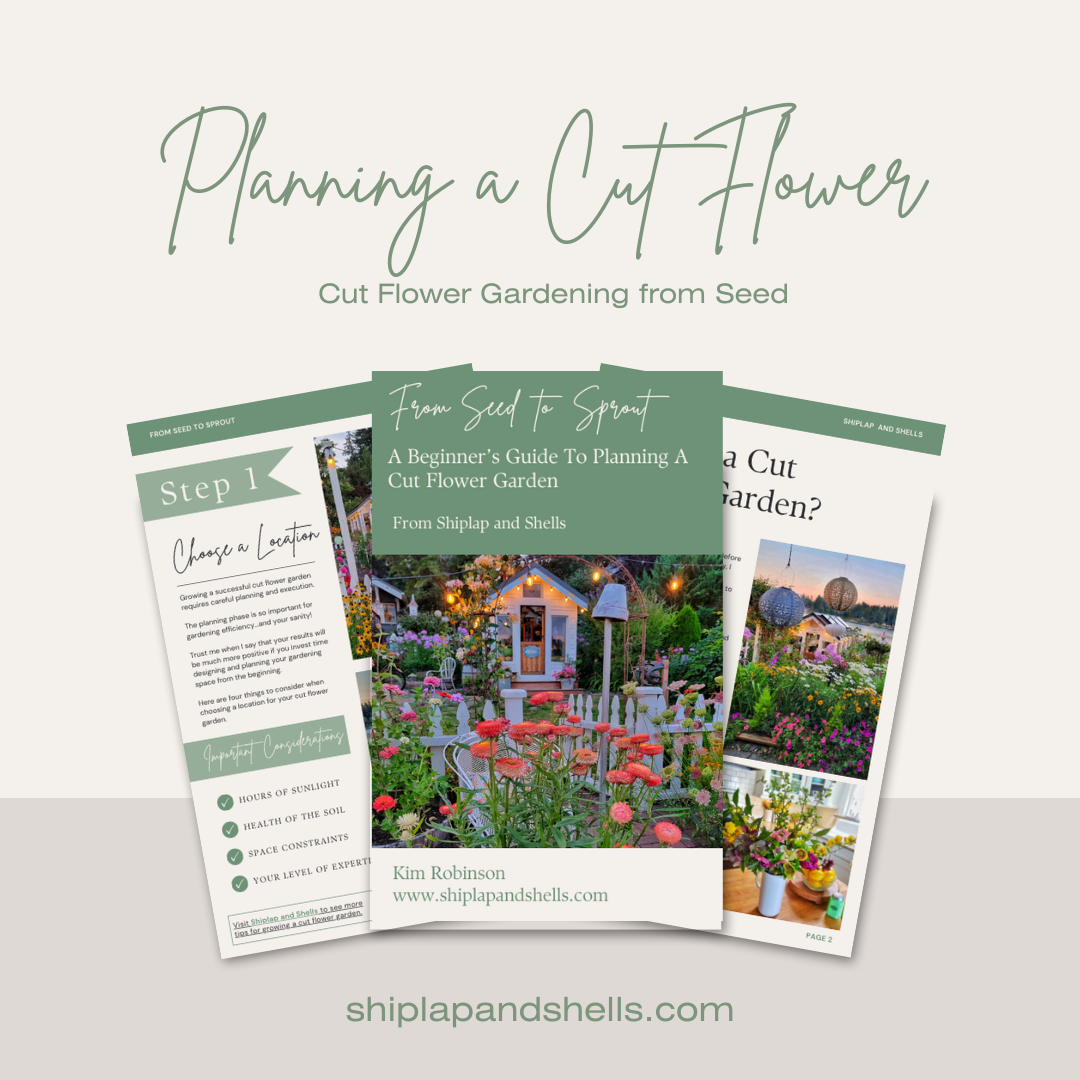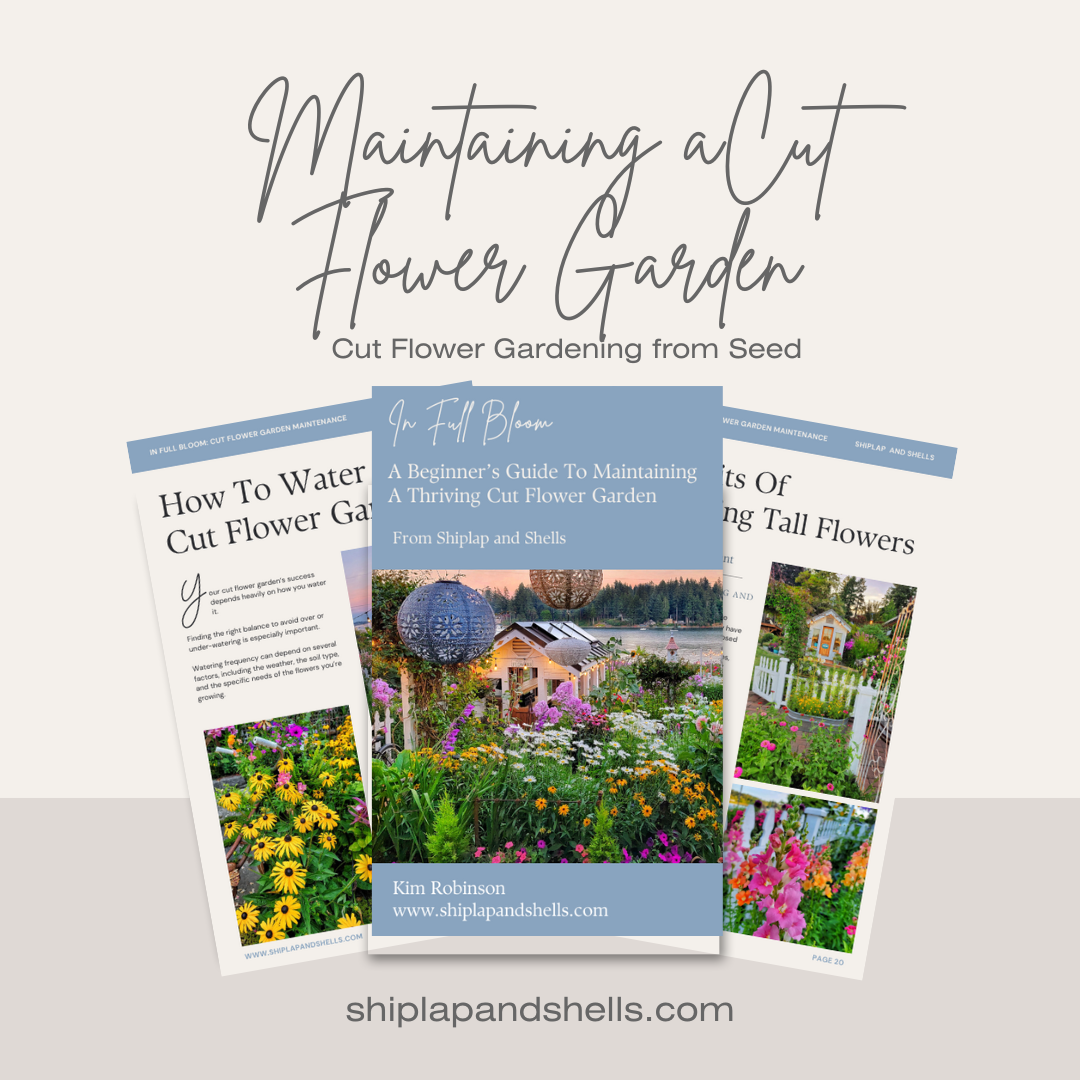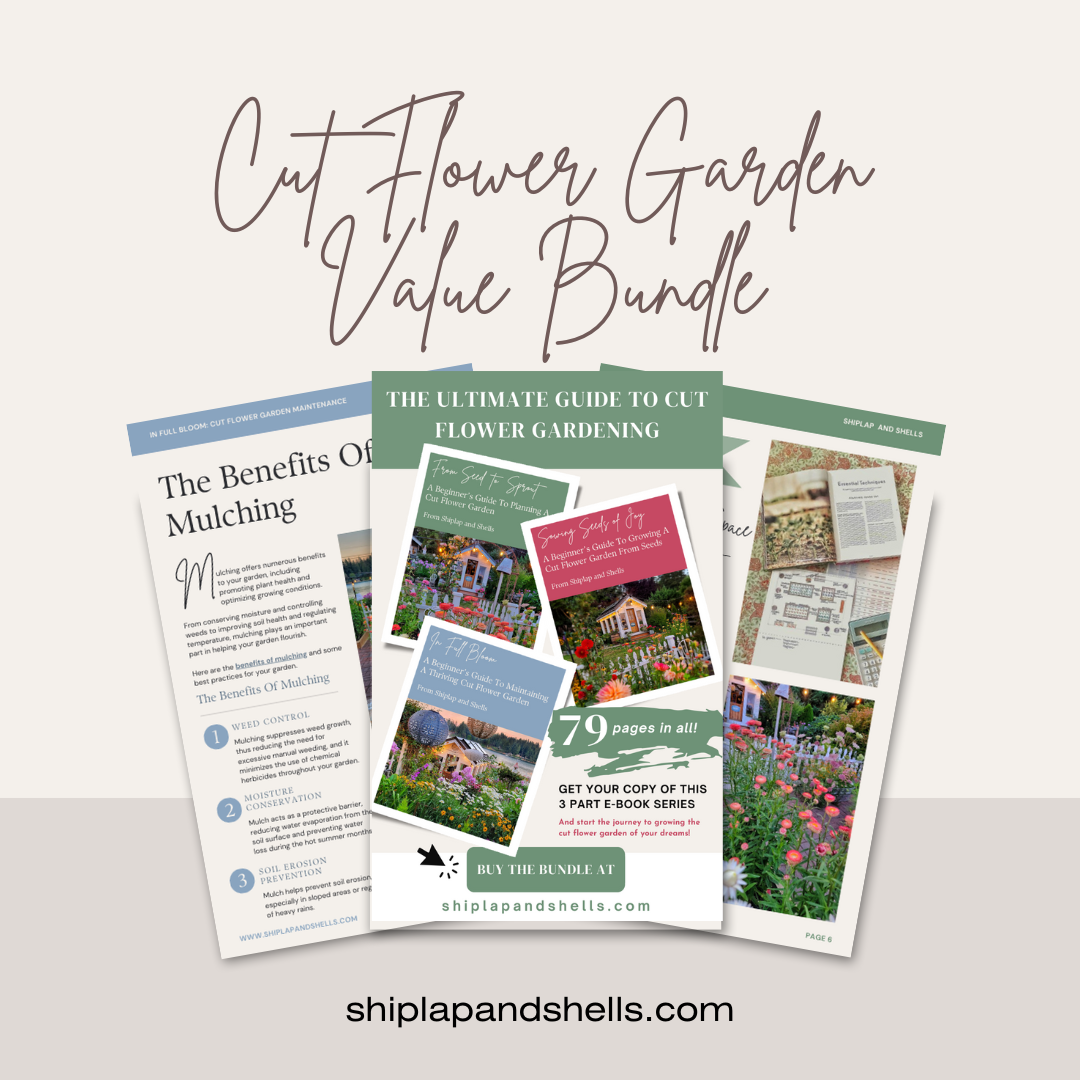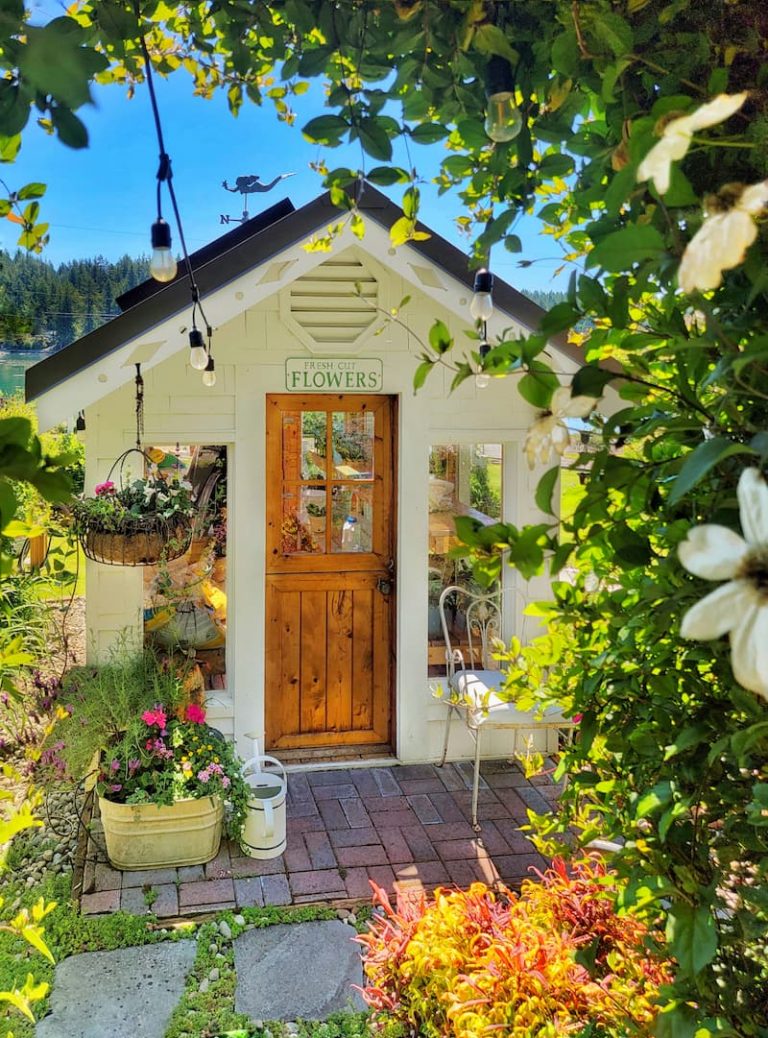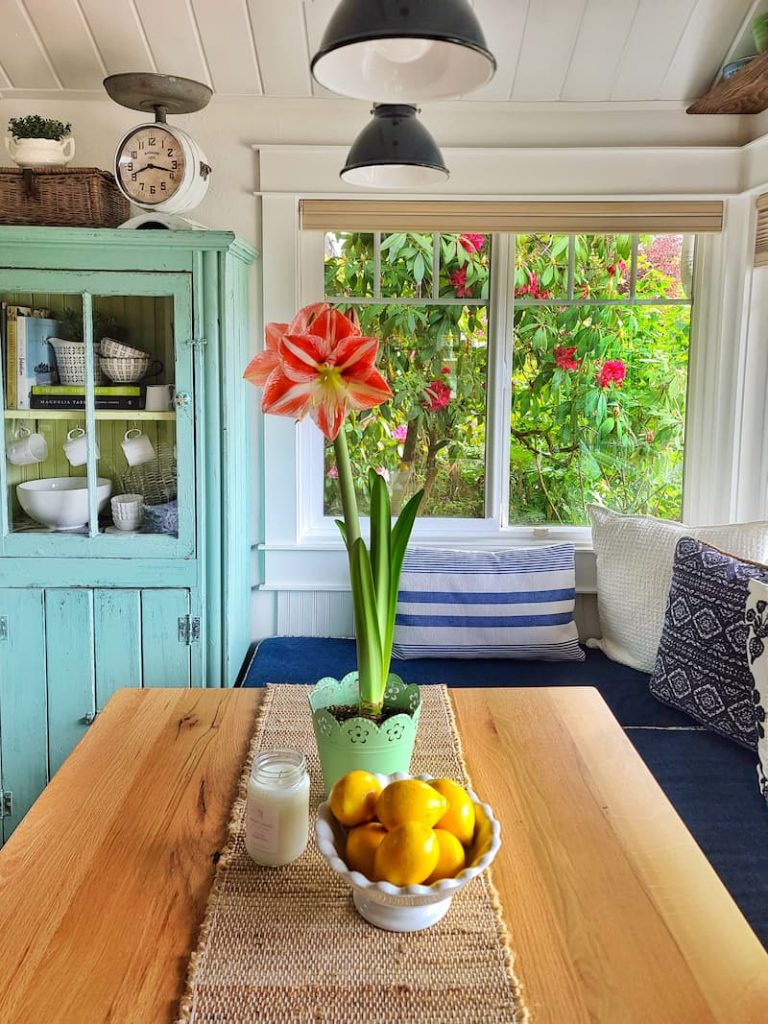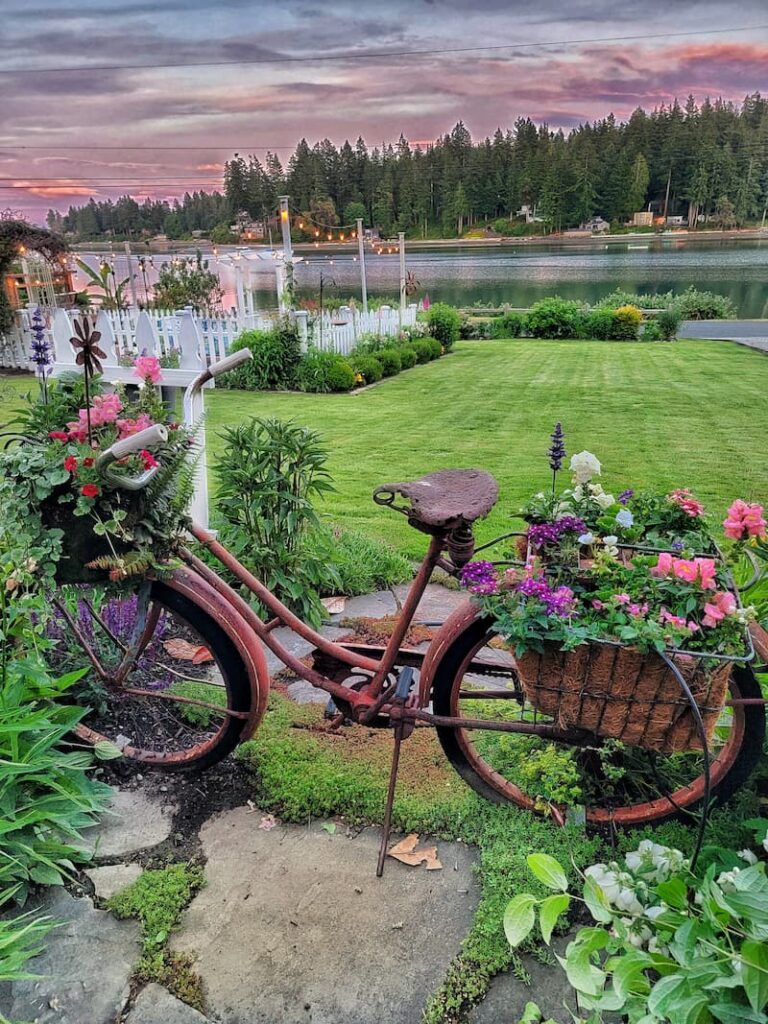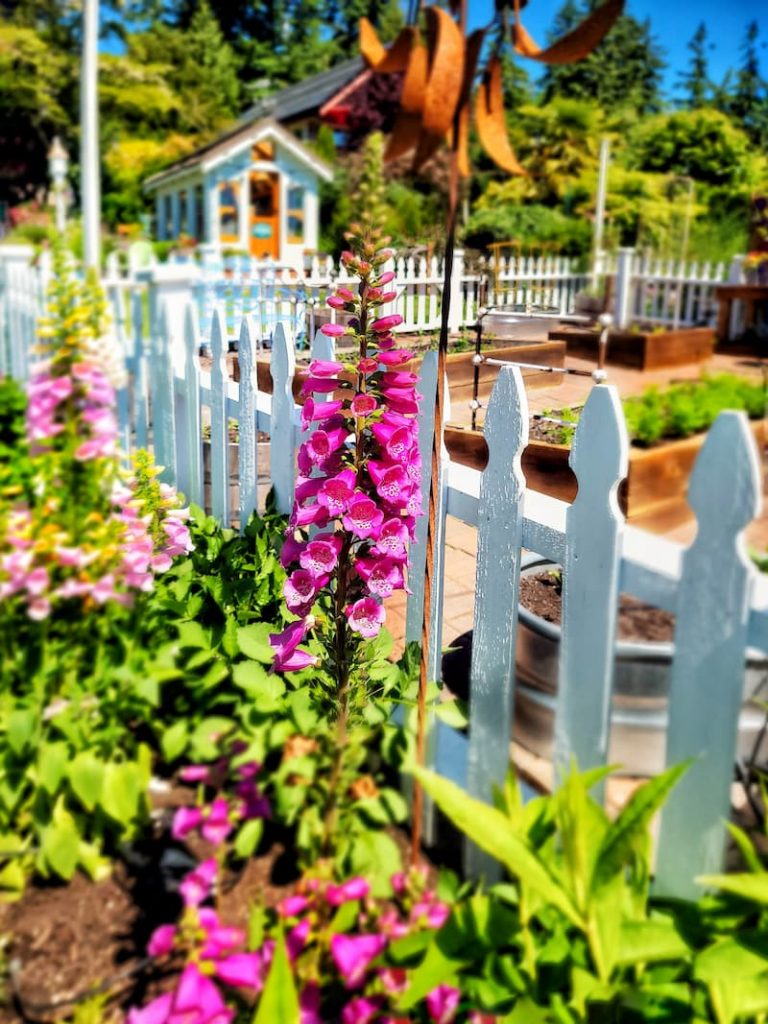How to Safely Transplant Flower Seedlings: Tips for Beginners
Have you ever wondered when and how to transplant your flower seedlings into the garden?
If you’re new to gardening, or even if you’ve been doing it for a while, knowing the right way to move your young plants into the ground is key. This beginner-friendly guide covers everything you need to know to ensure your seedlings get off to a strong start in your cut flower garden, from timing to technique.
There’s something so rewarding about watching a tiny seed turn into a beautiful bloom. And when you’ve nurtured those seedlings for weeks or even months, getting them into the garden feels like a big moment. Honestly, it’s one of my favorite parts of the season.
Right now, I’ve got trays of flower seedlings in my greenhouse, all ready for their next step. But timing really matters. Transplant too early, and the plants might struggle; too late, and they can become rootbound or stressed. Even after years of gardening, I still worry if it’s the right weekend to plant them out.
Mother Nature always has the final say, so I tend to play it safe. Our average last frost date has passed, but I still find myself checking the forecast a few more times—just in case.
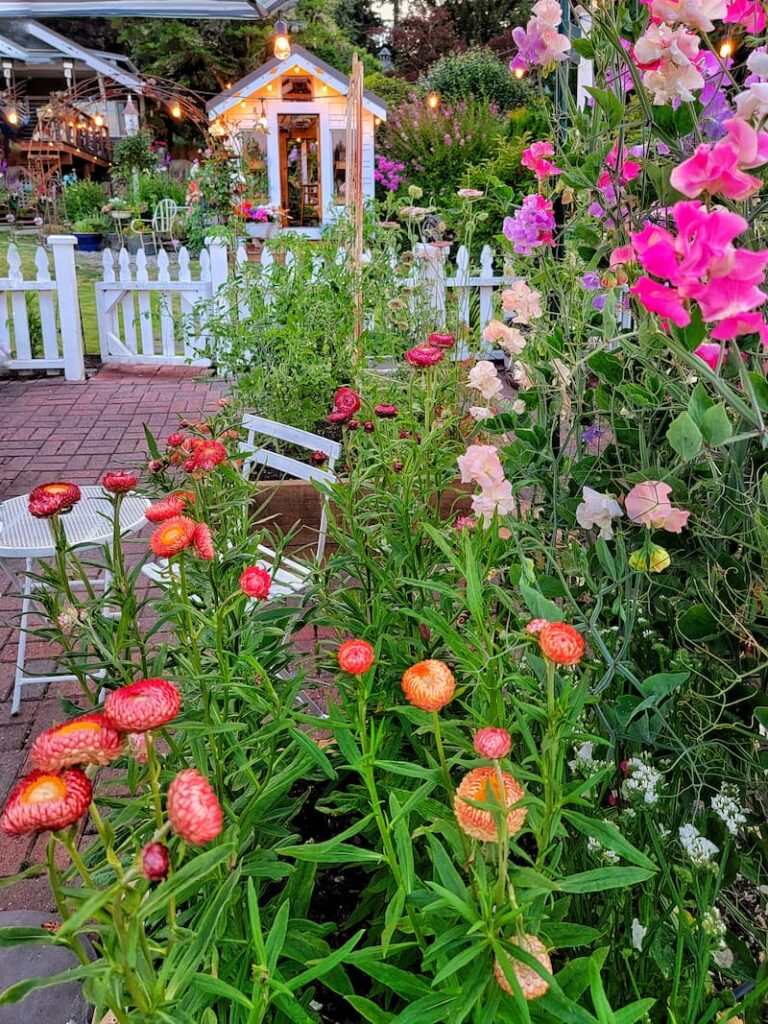
As an Amazon affiliate, I earn a commission from qualifying purchases at no additional cost to you. My blog also includes other affiliate links for your convenience. Click here to read my privacy policy.
Why Transplant Flower Seedlings While Still Indoors
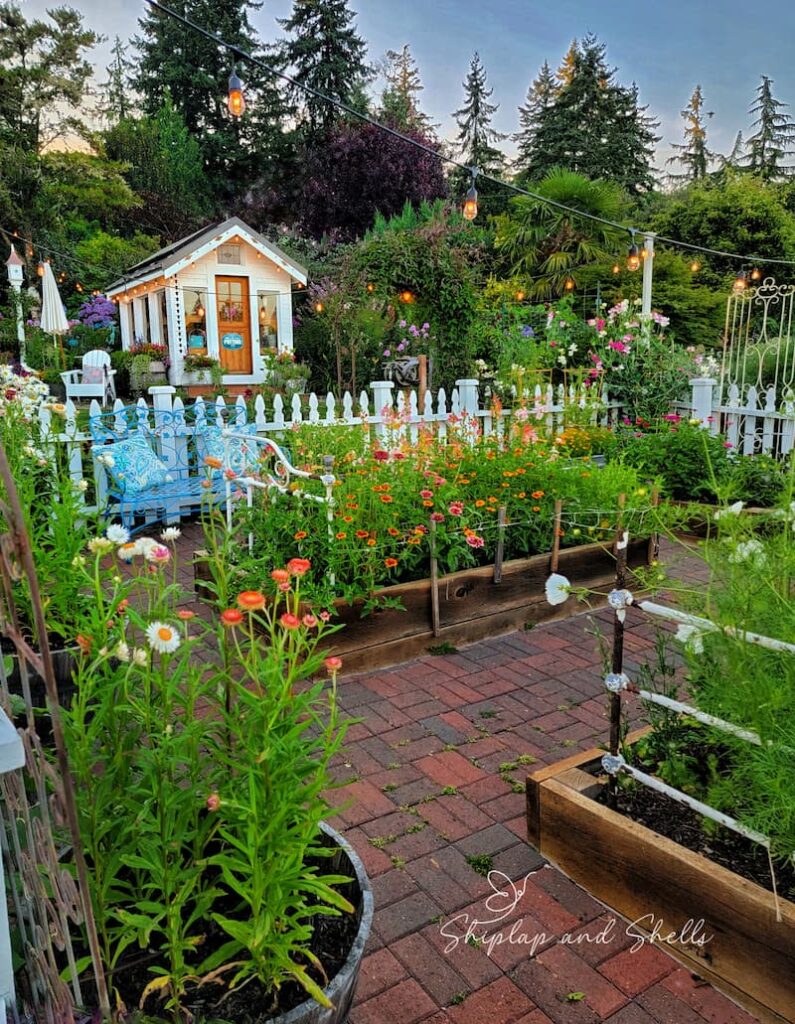
Sometimes your seedlings outgrow their first little homes before it’s time to move them into the garden, and that’s normal. If you notice they’re starting to crowd each other, or they’re looking a little stressed, it might be time to pot them up into something a bit bigger.
Giving your seedlings more space indoors helps reduce competition for water and nutrients, which can make a big difference in their growth. With extra room to stretch out, their roots grow stronger, and strong roots lead to healthier plants once they’re out in the garden.
Not every seedling will need this extra step. It really depends on how they were started and what type of container they’re in. If they’re already in roomy cells or pots, they may be just fine until transplanting day.
Also, keep in mind that some flower varieties grow slowly or stay compact, and those might not need to be bumped up before heading outdoors. A little observation goes a long way here!
When Should You Transplant Seedlings?

You’ve probably heard it before—timing really is everything in gardening. So, how do you know when your seedlings are ready to make the big move outdoors?
A good rule of thumb is to wait until all danger of frost has passed. Most seed packets will mention this, and they’re not kidding! Even the healthiest seedlings can’t handle a surprise frost.
If you’re not sure when your average last frost date is, you can look it up by entering your zip code online. It’s super helpful and can save you from transplanting too early.
Even if your seedlings look strong and ready, frost is not their friend. One cold night can undo all your hard work, so it’s always better to wait just a little longer if you’re unsure.
How Big Should Flower Seedlings Be Before Transplanting?
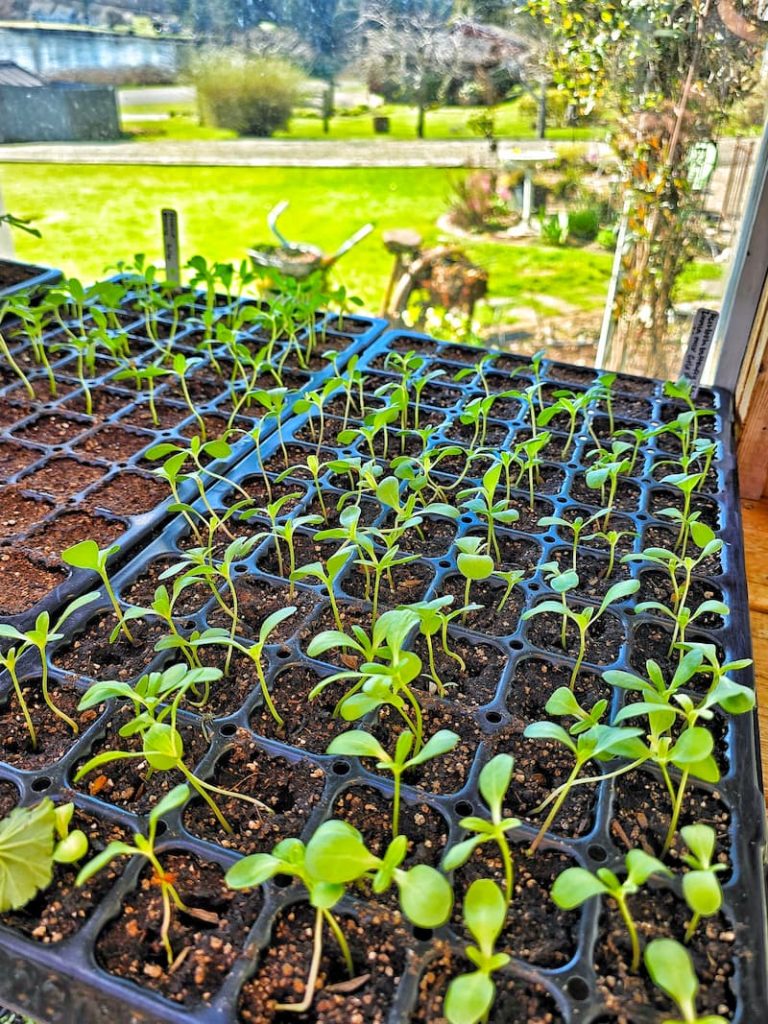
This is one of the most common questions I get—and it’s a good one! Knowing when your seedlings are actually ready for life in the garden can feel a little tricky at first.
If you move them out too soon, they might not be strong enough to handle wind, sun, or cooler nights. But wait too long, and they can get rootbound or stressed, which can slow them down once they’re planted.
So what’s the sweet spot?
For most flower seedlings, it’s when they’ve grown at least two to three sets of true leaves. These are the leaves that show up after those first little baby leaves (called cotyledons). When you see them, it’s usually a sign your plant is maturing and ready for the next step.
At this point, your seedlings should have a decent root system and be strong enough to handle the transition from their cozy indoor setup to the garden beds outdoors.
How Do You Know When Seedlings Are Ready to Transplant?
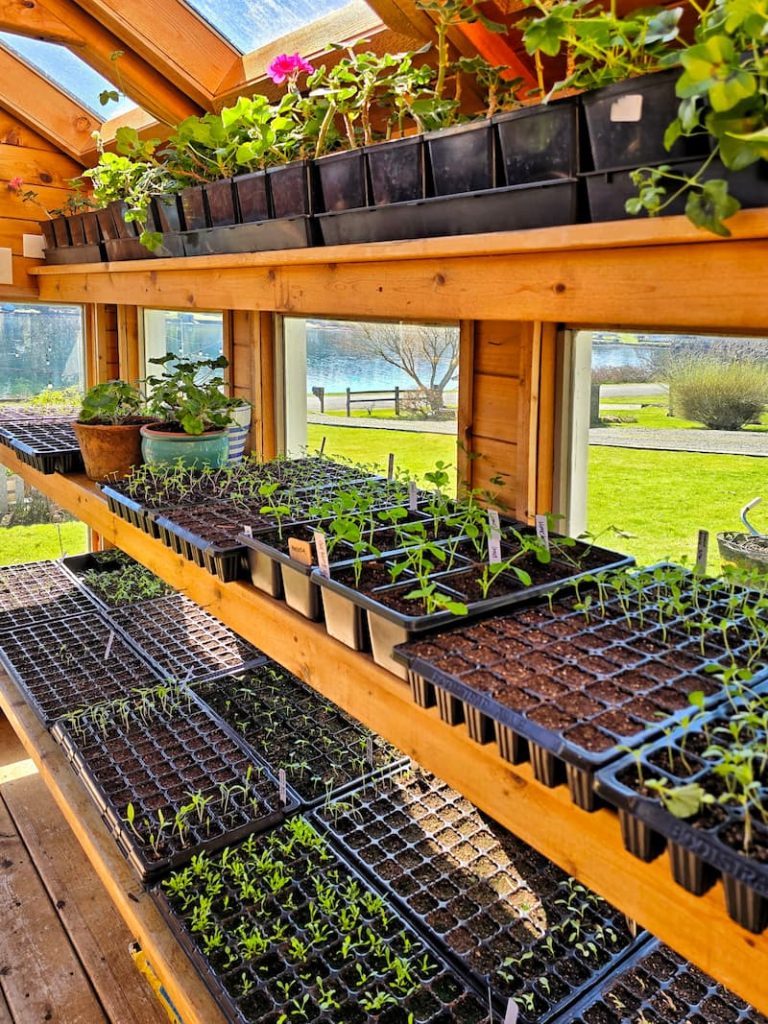
We already talked a bit about true leaves, but let’s dive a little deeper, because understanding the different types of leaves can really help you know when it’s time.
When a seed first sprouts, it sends out its very first leaves called cotyledons. These are usually small, oval, or rounded, and they give the plant its first nutrients. After those come the true leaves, which actually look more like the mature leaves your plant will grow later on.
The best time to transplant is once your seedling has at least one or two sets of true leaves. That’s a great sign that it’s strong enough to handle life outside and can start putting energy into growing deeper roots in the garden.
Another clue? Check the roots. If you see healthy white roots peeking out from the bottom of the pot, that’s usually a good sign that your plant is ready. You can also gently slide the seedling out of its container to check if the roots are well-developed but not circling or tangled.
And don’t forget to give your seedling a little “sturdiness check”. If it’s standing tall and growing upright, it’s likely ready for its garden debut.
What Happens if You Transplant Seedlings Too Early?
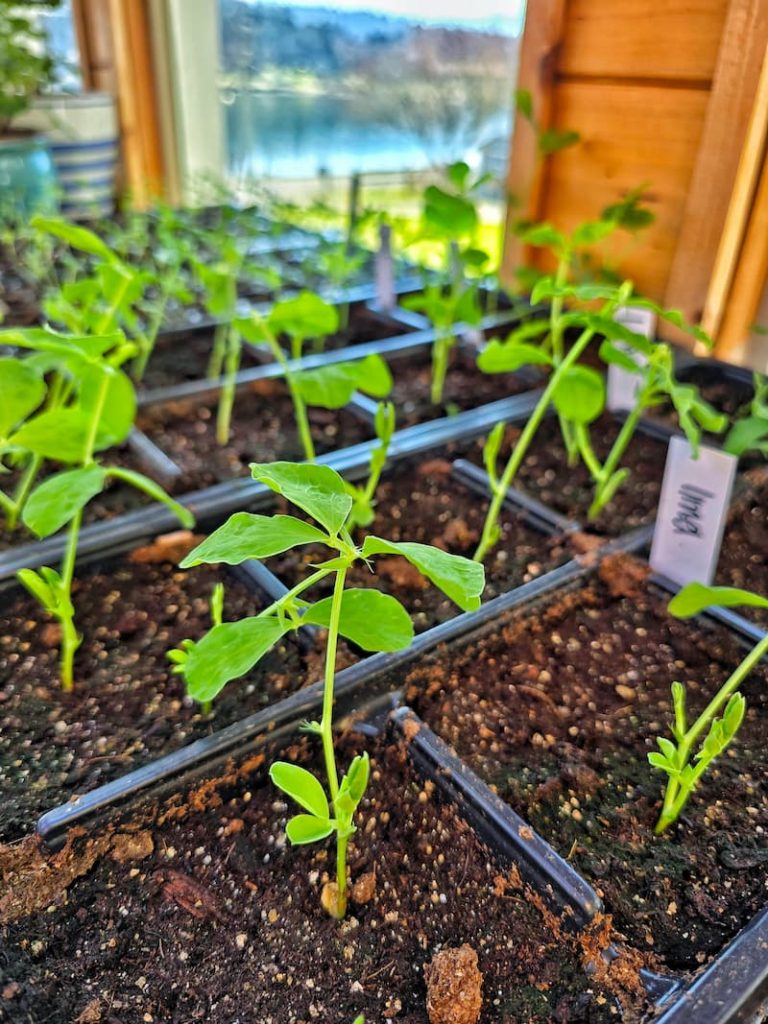
It’s tempting to get a head start on planting, especially when the sun’s out and the garden beds are calling. But moving your seedlings outside too soon can do more harm than good.
If they haven’t developed a strong root system or a few sets of true leaves yet, they’re not quite ready to face the elements. And that sudden change from the cozy indoors to the unpredictable outdoors? It can be a real shock to their system.
You might notice stunted growth, yellowing leaves, or even lose a few plants altogether. Frosty nights, chilly winds, or even just big swings in temperature can really take a toll on these young plants. Their roots are still getting established, so they may struggle to soak up the water and nutrients they need to thrive.
Bottom line? Giving them a little more time indoors can make a big difference in how well they settle into your garden.
What If You Transplant Seedlings Too Late?
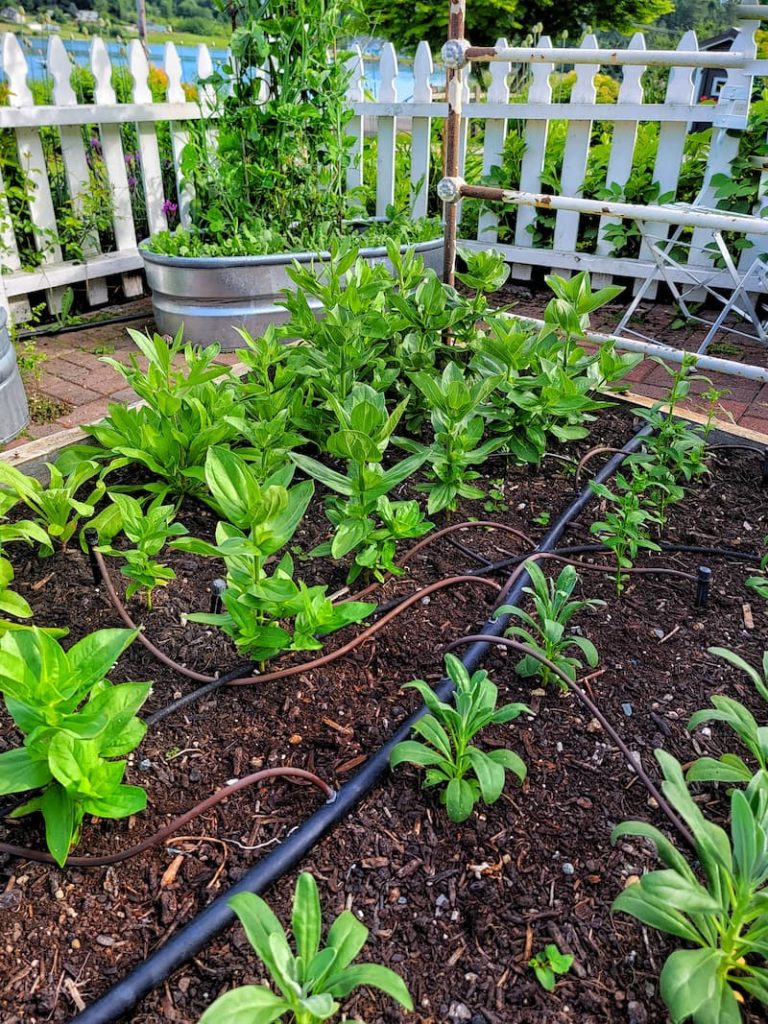
And then there’s the other side of the coin—waiting too long to transplant.
If seedlings stay in their pots or trays for too long, their roots can start circling around the inside of the container. This is called becoming root-bound, and it makes it much harder for the plant to spread out and absorb water and nutrients once it’s finally in the ground.
When that happens, your plants may get off to a slow start—or worse, they can end up stunted and stressed.
Overcrowding is another issue. As the seedlings grow, they’ll start competing for space, light, and nutrients. This added stress can leave them more vulnerable to pests and disease, not exactly the strong start you’re hoping for in the garden.
So while it’s smart to wait until conditions are just right, keeping an eye on your seedlings’ growth is just as important to avoid missing their ideal window.
Garden Supplies and Tools
Check out my favorite garden supplies and tools for the growing season. Whether you’re looking for potting soil or deer repellent, you’ll find what I use in my own garden.
The Best Way to Transplant Seedlings Outdoors
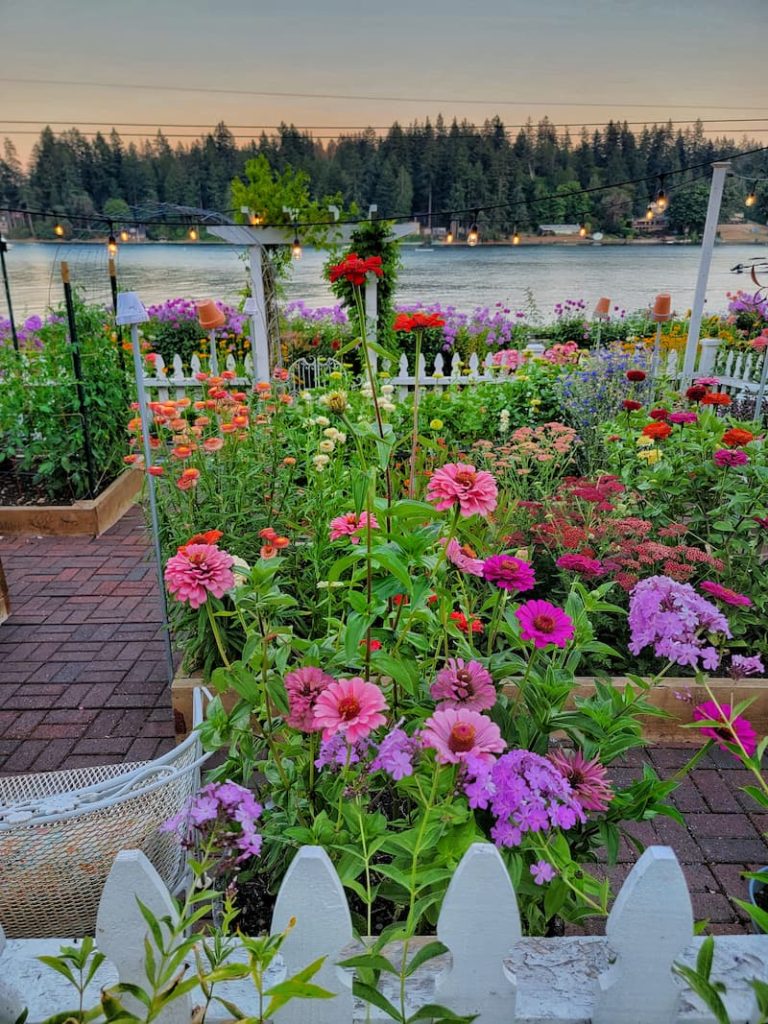
When it comes to transplanting seedlings, success really comes down to timing, care, and a little technique.
If you’re wondering how to give your young plants the best possible start, I’ve got you covered, from prepping your garden beds to the final finishing touches. These simple steps will help your seedlings settle in and thrive in their new home.
Let’s walk through how to make the move from pot to plot as smooth as possible.
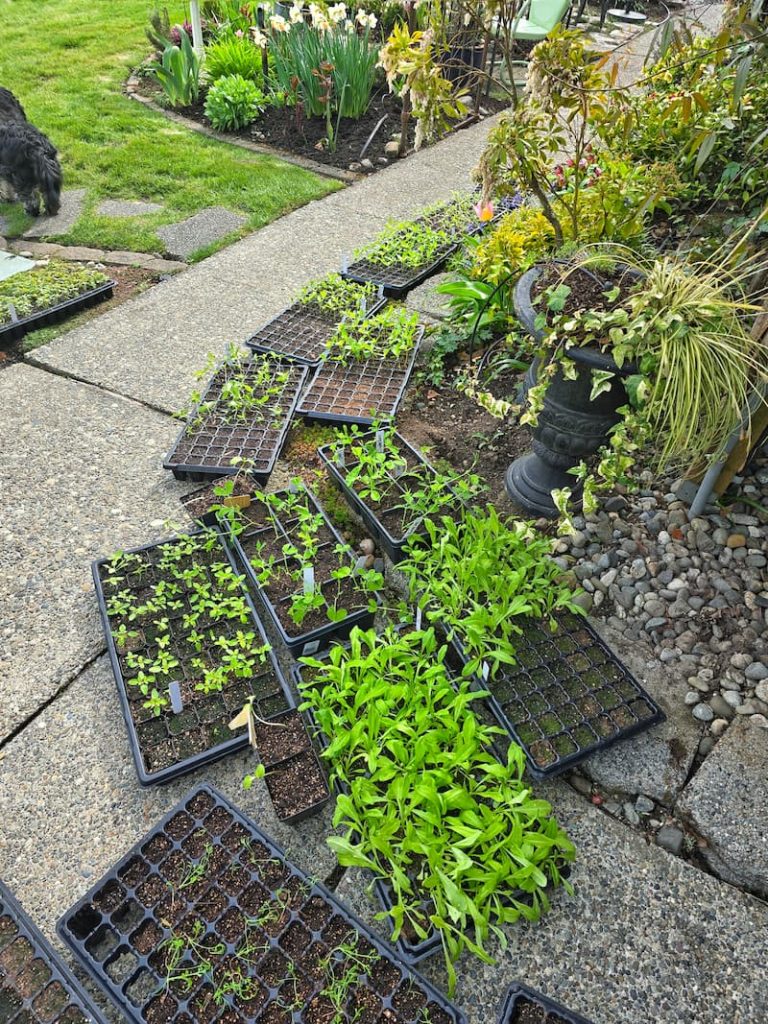
Harden Off Your Flower Seedlings
Before you move your seedlings into the garden, they need a little outdoor training, and that’s where hardening off comes in.
Think of it as a gentle introduction to the real world. After spending weeks in a cozy, controlled space like a greenhouse or windowsill, your seedlings need time to adjust to things like sun, wind, and cooler nights. Jumping straight from indoors to garden beds can be a shock to their system.
Start by placing them outside for just a couple of hours a day, ideally in a shady, sheltered spot. Each day, gradually increase the time and the amount of sunlight they get. After about a week to ten days, they’ll be much better prepared to handle life in the garden.
Taking the time to harden off your seedlings helps prevent transplant shock and gives your plants a strong, healthy start once they’re in the ground.
Water Your Seedlings Before Transplanting
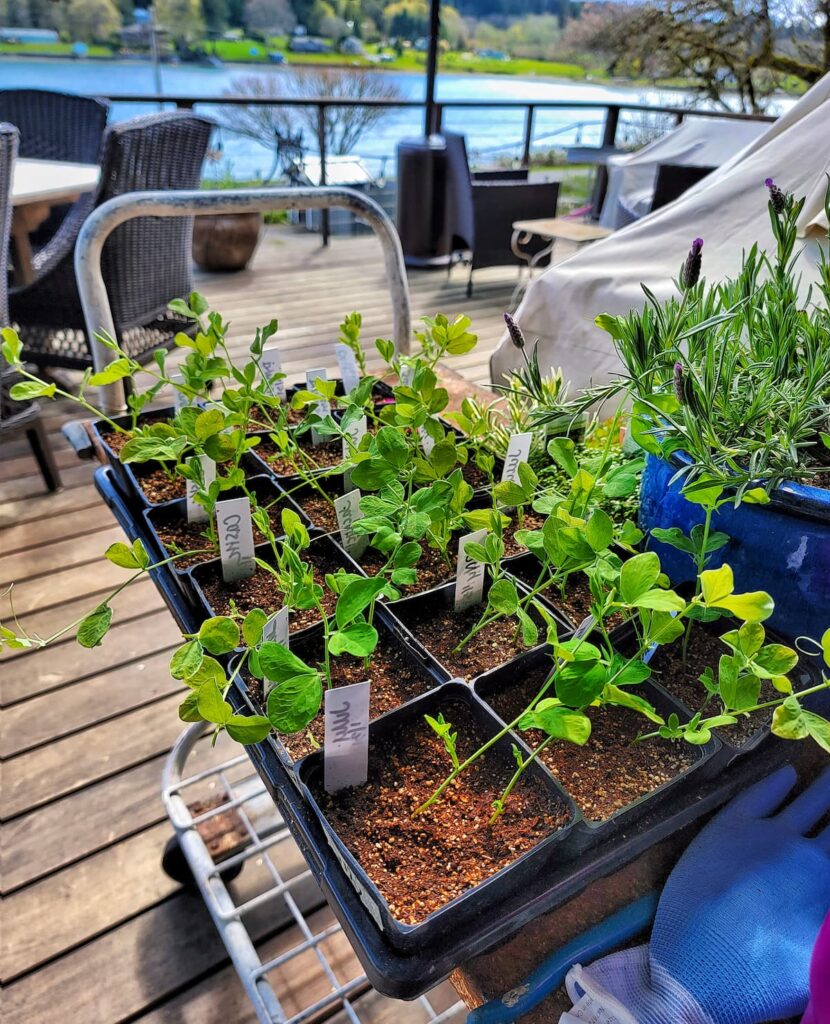
Give your seedlings a good drink the day before you plant them outside. Well-hydrated roots are less likely to go into shock and more likely to settle into their new home quickly. Think of it as helping them ease into the transition.
Just be careful not to overdo it. You want the soil to be moist, not soggy. Too much water can make the roots soft and slow to adapt once they’re in the ground. A gentle, even watering should do the trick.
Find a Protected Spot
Choosing where to plant your seedlings isn’t just about what looks pretty—it’s also about giving each flower the conditions it needs to thrive.
Pay attention to sunlight, soil, and moisture. A plant that loves full sun won’t do well tucked into a shady corner, and a shade-loving flower can get scorched in too much light.
Also, keep in mind how big your plants will get once they mature. Giving them enough space now helps prevent overcrowding later, and that means better air circulation, healthier growth, and fewer pest and disease issues down the road.
Wait for a Mild Weather Day
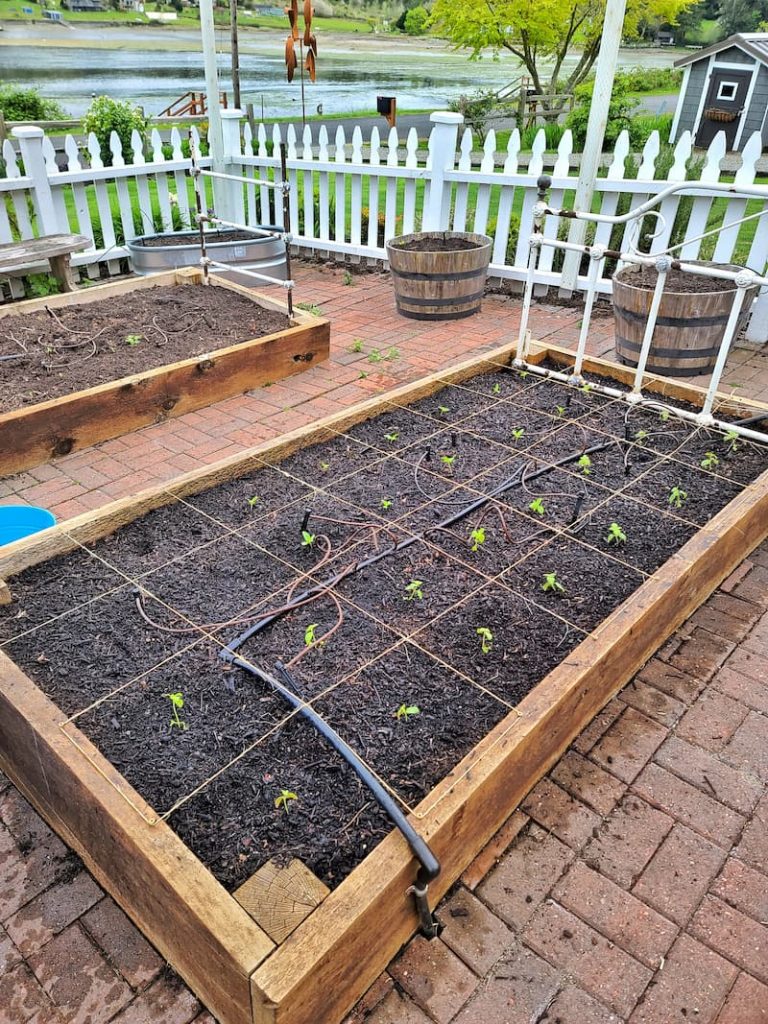
When it’s time to transplant, try to pick a calm, overcast day with mild temperatures. Cloud cover and cooler weather give your seedlings a break from the harsh sun, helping to prevent them from drying out too quickly.
Early morning is usually the best time to plant. The ground is still cool, and your seedlings will have the whole day to settle in before nightfall. Avoid transplanting during the heat of the day, when the sun can be too intense for their delicate leaves and roots.
Prep Your Soil
Before you plant, take a few minutes to give your garden beds a little TLC. Healthy soil = happy plants!
If you can, test your soil’s pH and make any needed adjustments with amendments based on what your flowers prefer. This gives your seedlings the best shot at taking in all the nutrients they need.
Mix in some organic matter like compost or well-rotted manure to enrich the soil. It not only boosts nutrition but also improves the texture and helps the soil hold onto moisture—something your seedlings will appreciate as they get established.
And make sure your soil isn’t too compacted. Loose, well-aerated soil will let those new roots stretch out and settle in with ease.
SHOP COMPOST
SHOP SOIL TESTS
Remove from Seed Trays
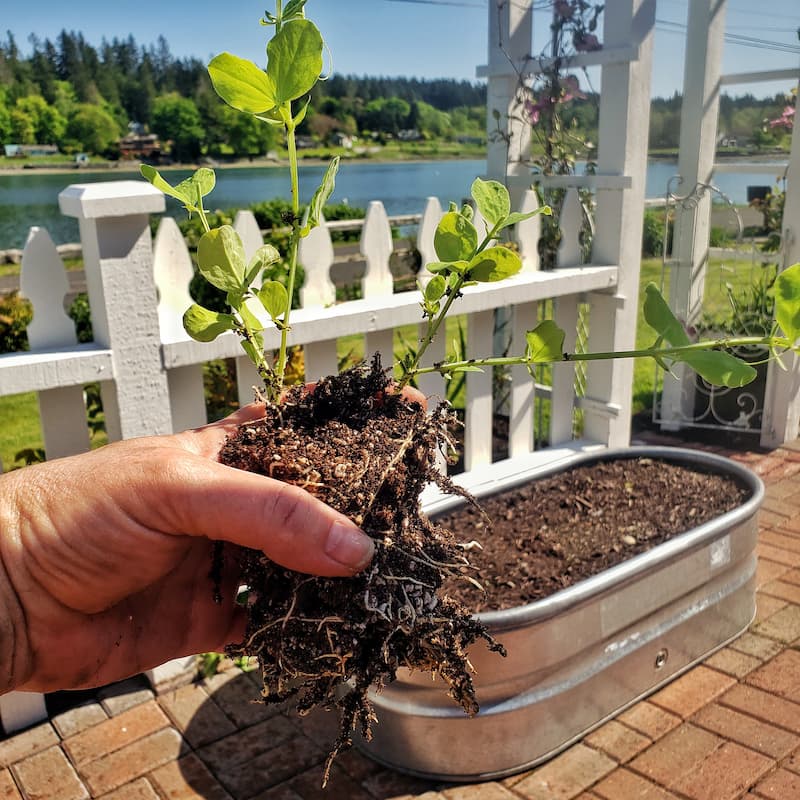
Getting your seedlings out of their trays might seem like a small step, but it’s an important one. The goal is to keep the root ball intact and avoid stressing those delicate young plants.
Here are a few tips to make it go smoothly:
A little patience and gentle handling go a long way in giving your plants the best start in their new home.
Planting Your Seedlings in the Garden
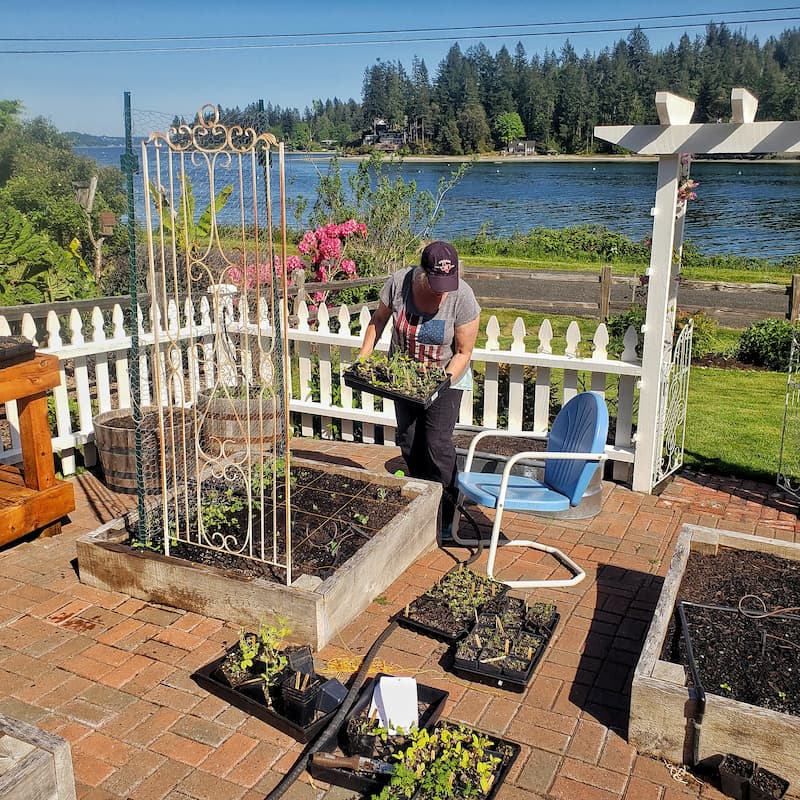
You’ve done all the prep work. Now it’s time to get those seedlings in the ground and give your future cut flower garden a strong start. Here’s how to make the transition smooth and stress-free:
Dig the Right-Sized Hole
In your prepped garden bed, dig a hole just a bit larger than your seedling’s root ball. This gives the roots space to spread out and get comfortable in their new home.
Inspect and Lightly Pull the Roots
If the roots are circling around the pot, gently tease them apart with your fingers. Loosening them up encourages outward growth, helping the plant settle in and establish itself more quickly.
Set the Seedling at the Right Depth
Place the seedling in the hole so that it’s sitting at the same depth it was in its container. Planting it too deep can lead to stem rot, while planting too shallow might leave roots exposed.
Backfill and Press Gently
Fill the hole back in with soil, pressing it lightly around the base of the plant to remove air pockets. You want the roots to make good contact with the soil, but be careful not to pack it down too tightly.
Water Thoroughly
Right after planting, give your seedling a generous watering. This helps the soil settle around the roots and provides that much-needed first drink after transplanting.
Add a Layer of Mulch
A thin layer of organic mulch helps retain moisture, keeps weeds at bay, and regulates soil temperature. Just be sure to keep the mulch a few inches away from the seedling’s stem to prevent rot or disease.
Provide Support if Needed
If you’re planting taller seedlings or varieties that tend to flop, go ahead and stake them now. It’s much easier to add support before they start growing fast!
Ongoing Care for Your Flower Seedlings
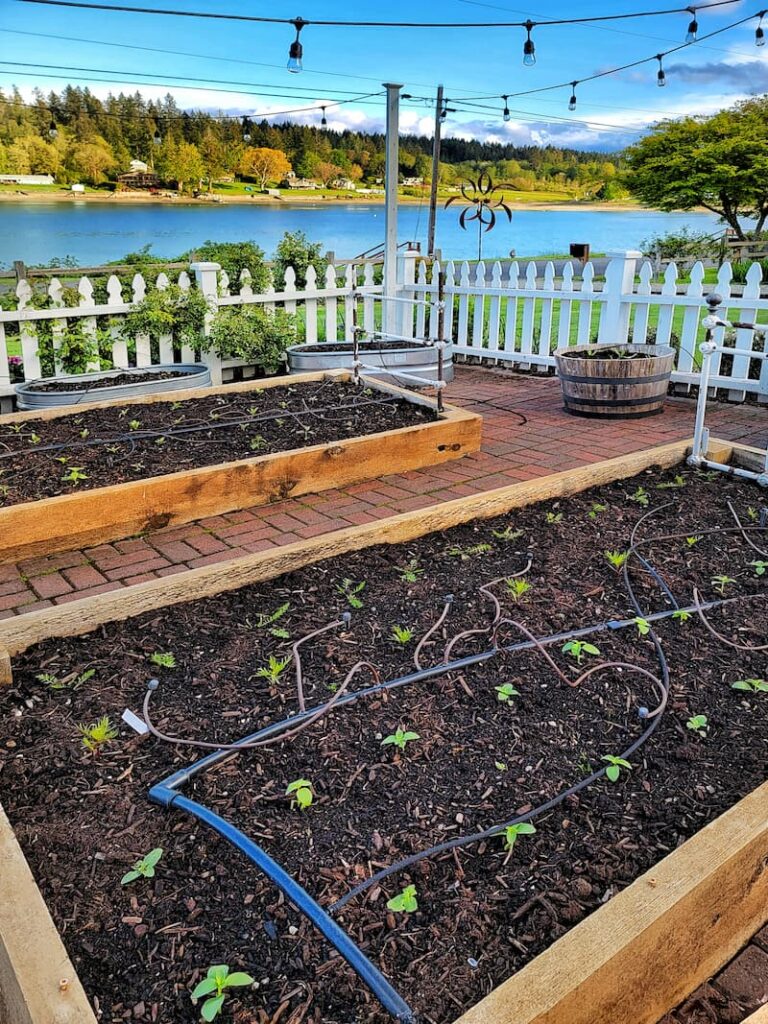
Getting your seedlings into the ground is a big milestone, but their journey doesn’t stop there. As they adjust to life in the garden, they’ll need a little extra care and attention to grow strong and healthy.
Keep Up with Watering
In the first few weeks after transplanting, your seedlings are working hard to stretch their roots into the surrounding soil. Regular watering is key during this time, but, as always, it’s all about finding the right balance.
Too little water and they’ll dry out; too much and the roots can rot.
Check the soil often and aim to keep it consistently moist, but not wet or soggy. Early morning is the best time to water, so your plants can soak it up before the heat of the day.
Keep an Eye Out for Pests and Disease
Your seedlings are still tender and can be more vulnerable to pests and plant diseases. Stay ahead of trouble by checking your plants regularly for any signs of damage. If you notice anything off, act quickly.
Try using organic pest control methods whenever possible, and choose disease-resistant flower varieties to help prevent problems before they start.
Feed Them Gently
A little boost goes a long way. Once your seedlings are established, you can apply a balanced, slow-release fertilizer to provide them with the necessary nutrients without overfeeding them. Think of it as a gentle nudge to help them keep growing strong.
Transplanting Seedlings to Containers
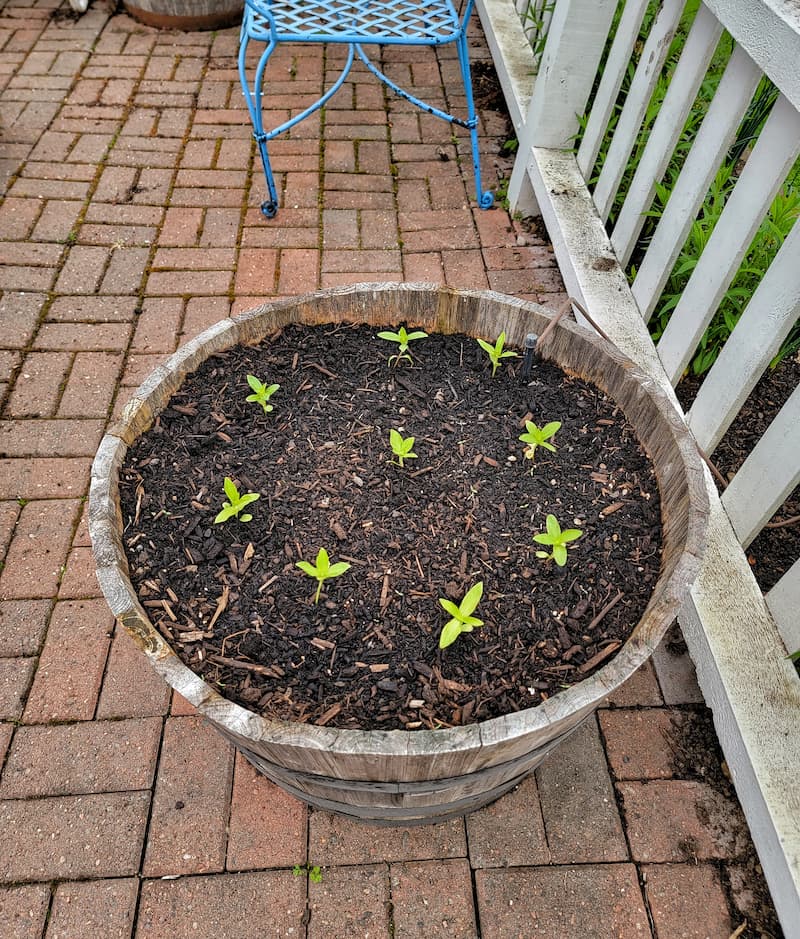
Don’t have room for a full garden? No problem! Growing cut flowers in containers is a wonderful option for patios, balconies, decks, or any space where you want a splash of color and beauty.
When transplanting seedlings into pots, there are a few key things to keep in mind:
Once planted, place your containers in a spot that gets the right amount of sunlight for the flowers you’re growing.
And remember, plants in pots rely completely on you, so consistent watering and feeding are even more important when gardening in containers.
Common Questions About Transplanting Seedlings
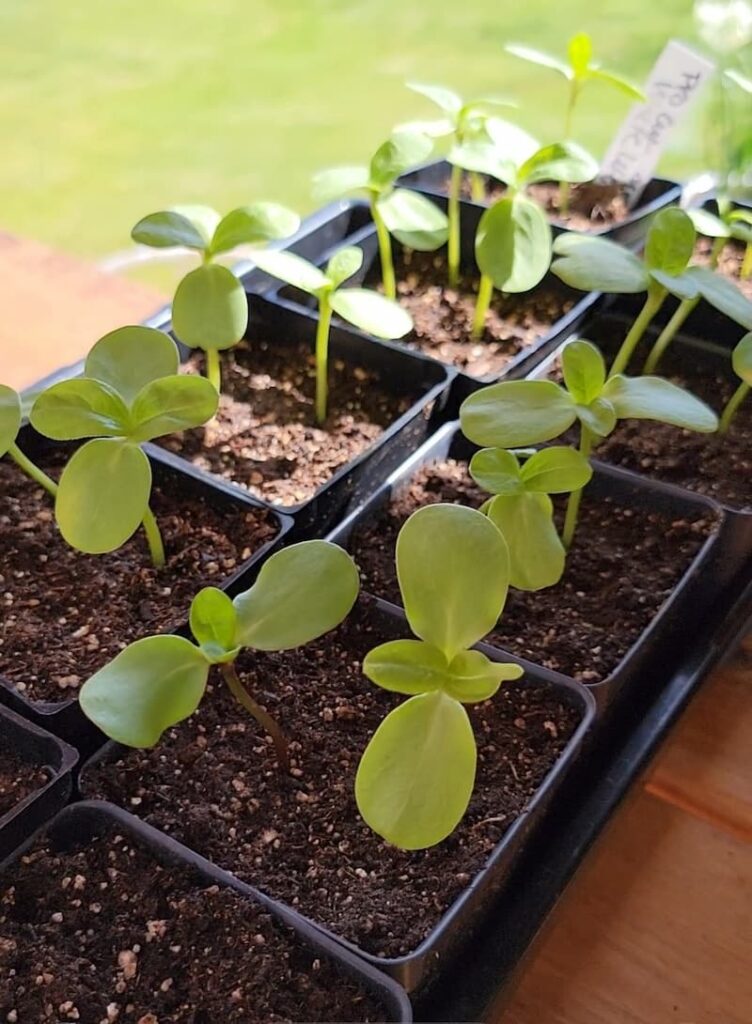
Even seasoned gardeners have questions when it comes to transplanting seedlings! Here are some of the most frequently asked ones, along with tips to help you feel more confident during this important step in the gardening process.
How Long Can Seedlings Stay in Trays?
Seedlings can stay in their trays until they’ve grown a strong set of true leaves, usually the second set that appears. This typically happens 2 to 6 weeks after germination, depending on the type of plant and your growing conditions.
Leaving them in trays too long can cause overcrowding and root binding, which stresses your plants and limits their ability to grow well once transplanted.
Do Seedlings Need Shade After Transplanting?

Yes, they do!
Even after hardening off, it’s a good idea to give newly transplanted seedlings a little shade during the hottest part of the day for the first few days or so.
You can use shade cloth, floating row covers, or even let taller plants cast a bit of natural shade. Once your seedlings have had time to adjust, you can gradually introduce them to full sun.
SHOP SHADE CLOTH
Can Seedlings Go Into Transplant Shock?
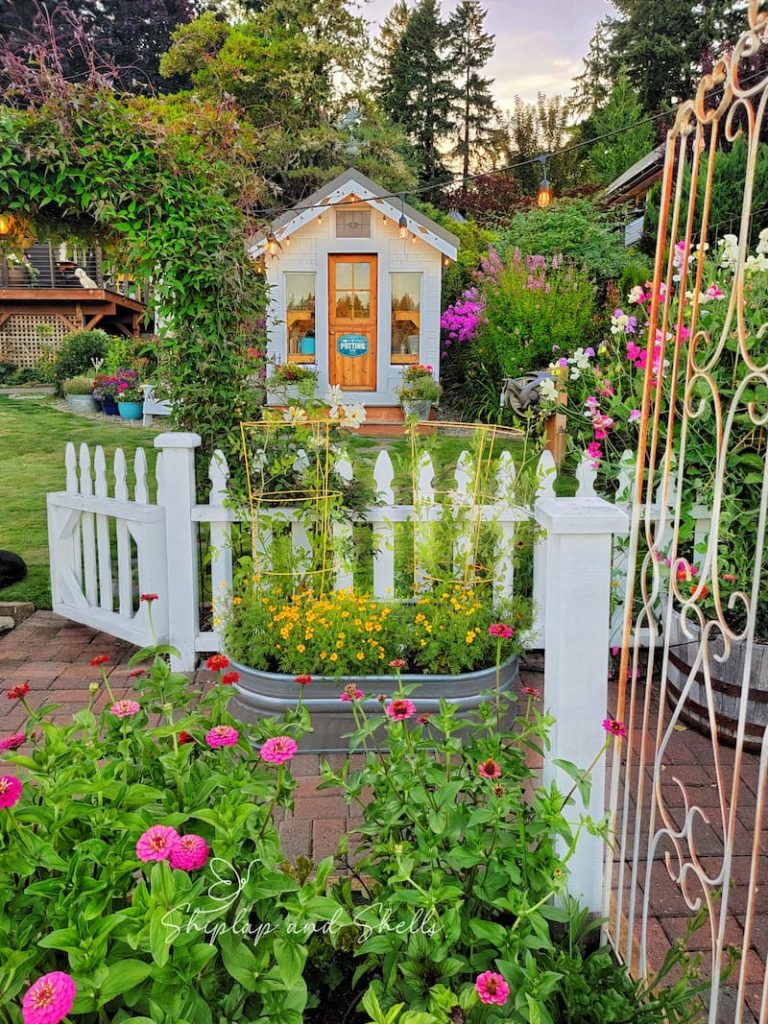
Absolutely. Transplant shock is a real thing and happens when plants go from the comfort of their indoor setup or starter containers to the more unpredictable conditions outdoors.
You might notice wilting, yellowing leaves, slowed growth, or in some cases, the plant not surviving at all.
How Do You Prevent Transplant Shock in Seedlings?
There are a few simple steps you can take to give your seedlings a smooth transition:
How Long Does it Take for a Plant to Recover from Transplant Shock?
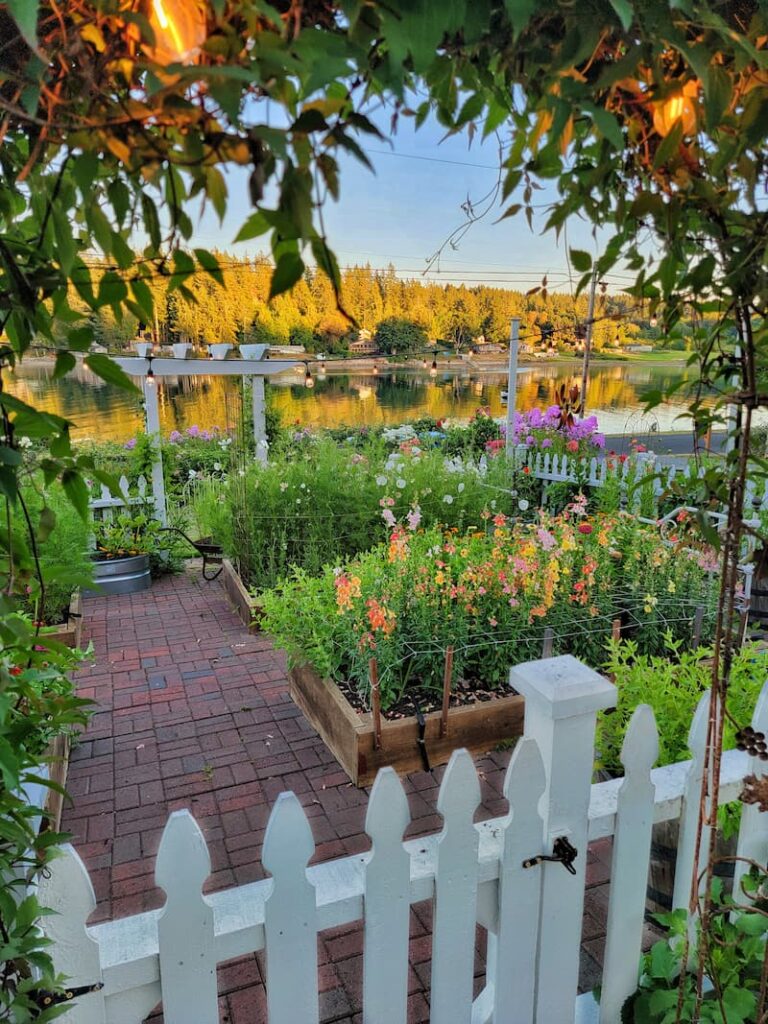
Recovery time depends on the plant and how much stress it went through. If all goes well, you should see signs of new growth in a week or two for annuals and veggies.
Perennials may take a few weeks to a month as they put more energy into building a strong root system first.
Why are My Seedlings Dying After Transplanting?
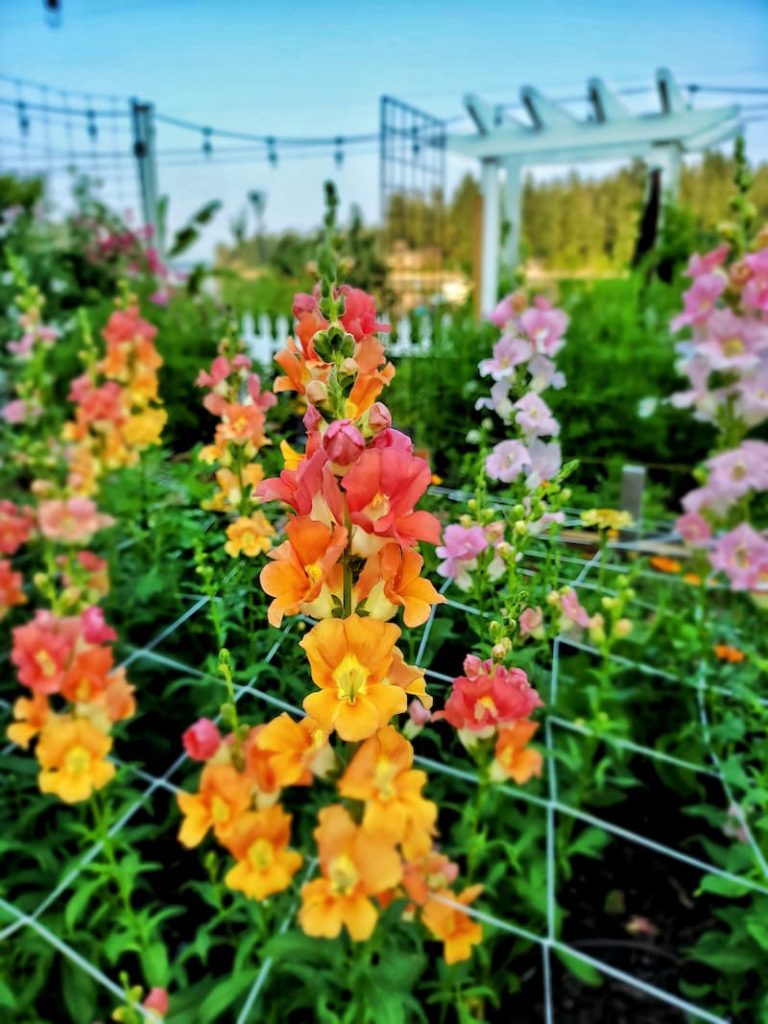
Here are several reasons why seedlings might die after being moved:
The good news? Most of these problems can be avoided with a little prep, gentle handling, and careful observation during the first few days after transplanting.
Gardening Made Simple – Your Guide to Growing a Cut Flower Garden
Final Thoughts on Transplanting Seedlings to the Garden
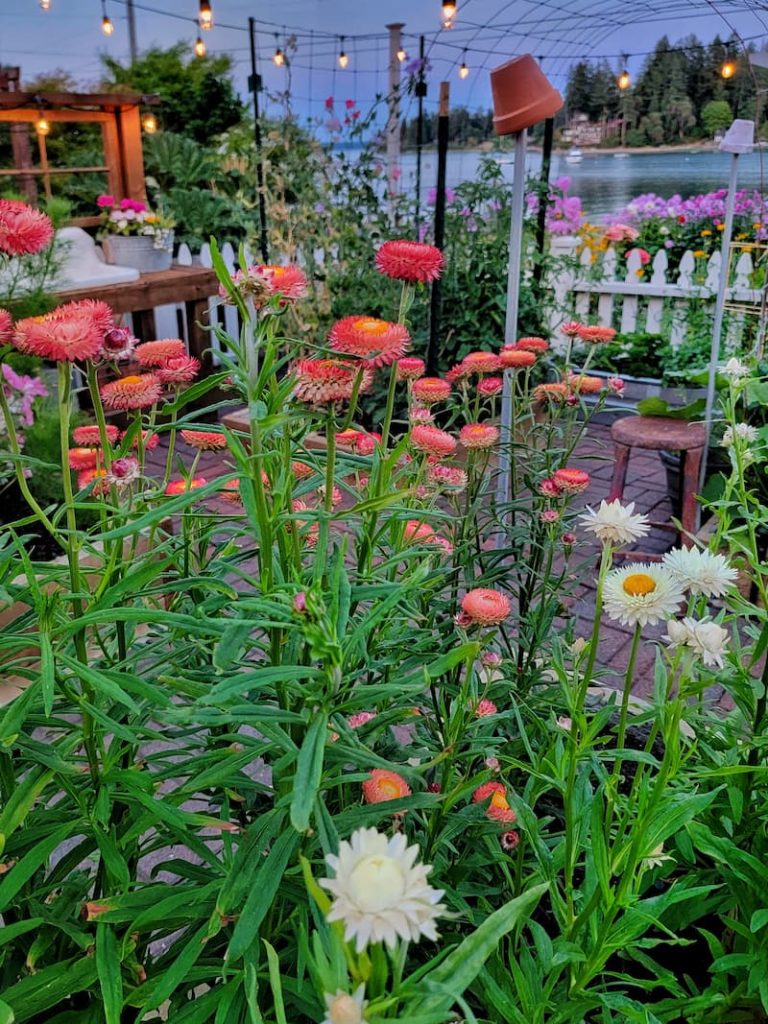
Transplanting your flower seedlings is a big step, and a rewarding one. With a little planning, patience, and care, you’ll give your young plants the best possible start in the garden.
From hardening them off and choosing the right day to plant, to watering wisely and keeping an eye out for pests, every little effort you make now will pay off with stronger, healthier blooms later in the season.
Remember, even the most experienced gardeners are always learning. Don’t worry if everything doesn’t go perfectly—each season brings new lessons and fresh chances to grow (in more ways than one!).
If you have any questions or want to share your own tips, I’d love to hear from you in the comments below. And if this post helped you, feel free to share it with a fellow gardener.
Until next time,
Happy Planting – here’s to a season full of beautiful flowers!

I’m a self-taught hobby gardener. Everything I share on my blog is my opinion and what has worked for me.
MORE POSTS
For You To Enjoy
Follow Me for More Inspiration
Shop my Amazon Storefront, LTK sources, and favorite home decor, garden, and lifestyle products. When you purchase from one of my links, I earn a small commission, which helps me continue sharing all the content you expect on my blog.
Be sure to follow me on Pinterest, Instagram, Facebook, TikTok, and LIKEtoKNOW.it. Do you like gardening? Join my Facebook Gardening Tips & Tricks group.

